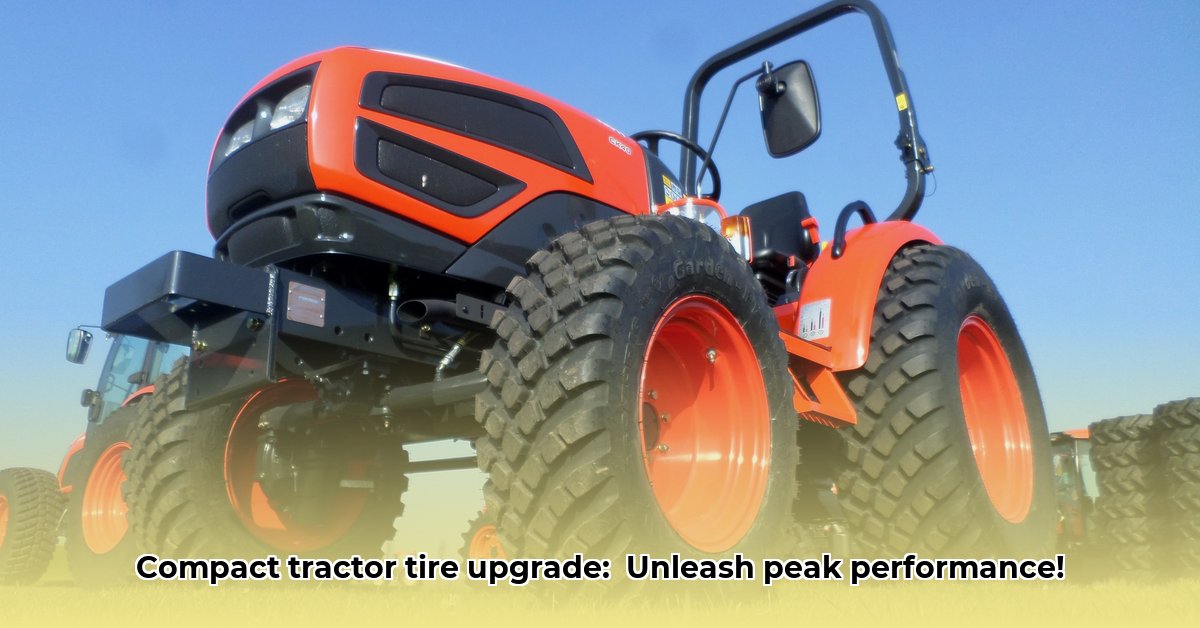
Compact Tractor Tire Selection: A Deep Dive into the Goodyear R14T Hybrid
Choosing the right tires for your compact tractor significantly impacts operational efficiency, profitability, and environmental impact. This article analyzes the Goodyear R14T hybrid tire, examining its performance claims, potential drawbacks, and overall value proposition. We will explore its versatility, traction, durability, and cost-effectiveness, providing actionable insights for farmers, manufacturers, and researchers. The analysis is based on available data, acknowledging limitations where further research is needed. For more information on tractor tire options, see this helpful resource.
Versatility: Bridging the Gap Between Farm and Road
The Goodyear R14T aims for versatility, excelling on diverse surfaces. This is a key advantage for users operating compact tractors across varied terrains, potentially eliminating the need for frequent tire changes. This increased uptime translates to higher productivity and reduced operational costs. However, optimal performance on specific surfaces might require further assessment and testing for confirmation of versatility claims.
Traction: Performance Under Real-World Conditions
Goodyear promotes superior traction performance for the R14T. While early feedback is promising, comprehensive, independent testing is necessary to quantify this claim rigorously. We need data-driven comparisons against competitor tires under various soil conditions (clay, sandy loam, etc.) to definitively establish its traction superiority. Only then can we confidently assess its effectiveness in diverse agricultural settings. How much better is the grip compared to leading competitors, and under what specific conditions does this advantage hold?
Durability and Lifespan: A Cost-Per-Hour Analysis
A longer lifespan is a key selling point. Goodyear suggests increased durability compared to traditional tires, implying long-term cost savings. However, long-term wear data and detailed cost-per-hour calculations are crucial for establishing true economic viability. What is the actual lifespan in hours of operation under different utilization scenarios? What are the projected maintenance costs over the tire's lifecycle? Addressing these questions is vital for a comprehensive cost-benefit analysis.
Tire Sizing and Availability: Expanding Market Reach
Goodyear's expansion of the R14T line to include fourteen additional sizes significantly broadens its compatibility with various compact tractor models. This strategic move demonstrates confidence in the product and increases its accessibility to a larger market segment, making it a more viable option for a wider range of farming operations.
Ride Quality: Balancing Grip and Comfort
The R14T aims to improve ride comfort without sacrificing traction. While a smoother ride reduces driver fatigue and potentially enhances productivity, the degree of comfort improvement relative to grip strength on different terrains requires further investigation. Quantitative data is needed to determine if the gains in ride quality offset potential performance compromises in specific agricultural scenarios. What is the trade-off between grip and comfort, and is the balance optimal for diverse operational scenarios?
Weighing the Pros and Cons: A Balanced Assessment
| Feature | Pros | Cons |
|---|---|---|
| Versatility | Reduced tire changes; increased efficiency across varied terrains. | Potential compromises in optimal performance for specific surfaces; requires further testing. |
| Traction | Claims of superior grip; requires independent verification through rigorous testing for definitive conclusions. | Lack of comprehensive, quantitative data comparing traction to competitors under diverse conditions; data needed. |
| Durability | Potential for extended lifespan, leading to cost savings. | Long-term wear and tear data; and cost per hour data currently lacking. |
| Size Availability | Wide range of sizes ensures compatibility with many compact tractors. | None noted. |
| Ride Comfort | Potential for improved ride quality and reduced operator fatigue. | The degree of improvement needs more testing and quantitative data. |
Actionable Recommendations for Key Stakeholders
- Farmers: Conduct thorough field testing under typical operating conditions. Maintain detailed records to assess wear, hours of use, and overall cost-effectiveness.
- Equipment Manufacturers: Integrate the R14T into new model lines. Gather user feedback for continuous product improvement.
- Goodyear: Invest in independent, comprehensive testing to substantiate performance claims. Provide clear data on cost-per-hour and total cost of ownership.
- Agricultural Researchers: Conduct comparative studies against existing tire options. Investigate the tire's environmental impact (e.g., soil compaction).
Conclusion: Promising Technology, but Data is King
The Goodyear R14T presents a compelling advancement in compact tractor tire technology. However, definitive conclusions about its long-term effectiveness rely on independent validation through further rigorous testing and the availability of long-term use data. While the potential for increased efficiency and cost savings is significant, it remains a technology whose full benefits need continued evaluation and rigorous data collection for credible confirmation.